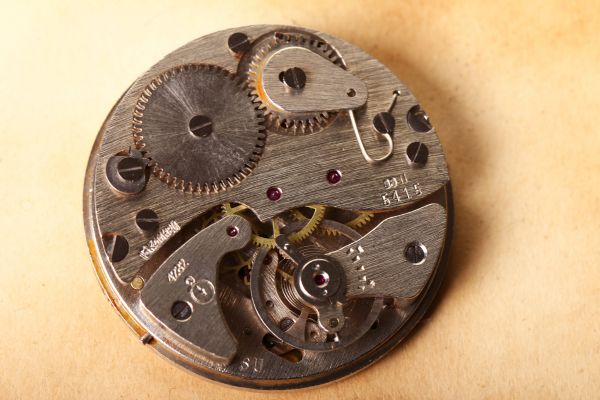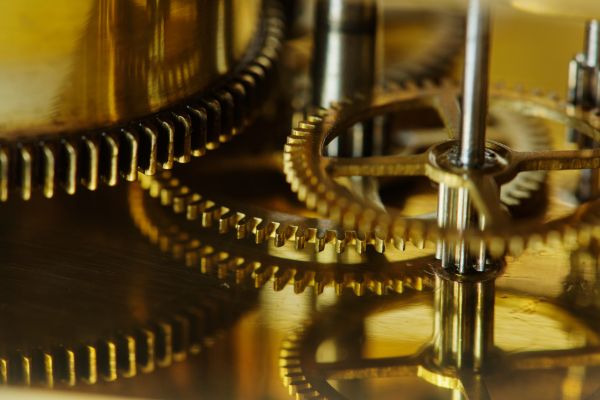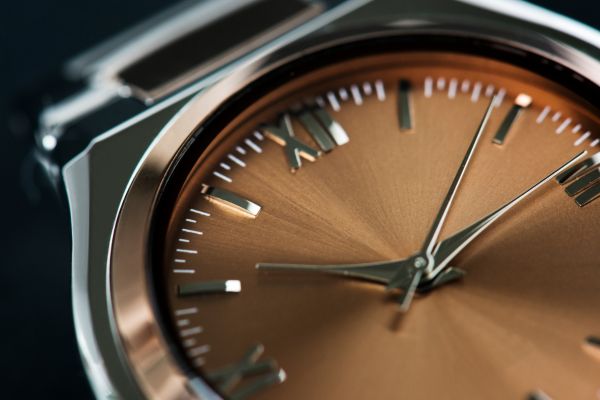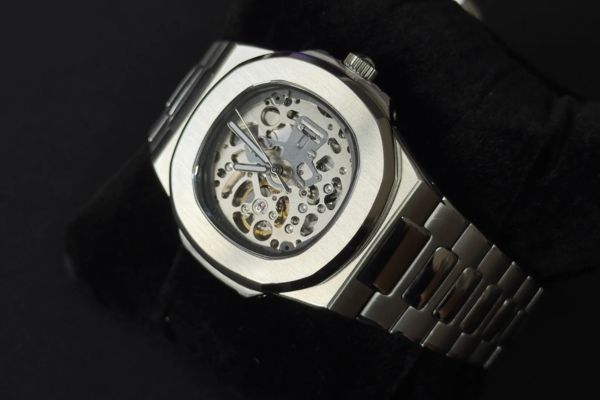Summary :
- The rotor: the key to automatic winding
- The mainspring: the energy reserve
- The gear train: the transmission of energy
- The escapement: the regulator of time
- The balance wheel: the beating heart of the watch
- The hands: displaying the time
Automatic watches, also known as self-winding mechanical watches, operate using an ingenious mechanism that uses the movements of the wrist to generate the energy needed to operate them. Unlike quartz watches that rely on a battery, automatic watches draw their energy from the wearer's movement, making them both autonomous and technically fascinating. Let's explore how an automatic watch works by analyzing the main steps of its internal mechanism.
The rotor: the key to automatic winding
The operation of an automatic watch begins with an essential component: the rotor . The rotor is a semi-circular oscillating weight, usually made of metal, attached to the internal mechanism of the watch. When the watch is worn, each movement of the wrist causes this rotor to turn on its axis. This rotation transforms the kinetic energy generated by the wearer's movements into mechanical energy .
With this energy, the rotor gradually winds the mainspring , allowing the watch to wind itself automatically without the need for daily manual intervention. This system is used in some of the most iconic watches, such as the Royal OAK , which combines a sophisticated automatic movement with an instantly recognizable iconic design.
The mainspring: the energy reserve
The mainspring , or barrel, is the element that stores the energy captured by the rotor. More precisely, the rotor winds the spring around an axis, which allows potential energy to be stored. When the spring is sufficiently tensioned, it begins to slowly relax, gradually releasing the stored energy to operate the rest of the movement.
The power reserve , that is, the time during which an automatic watch can run without being wound, depends on the length of the mainspring and the efficiency of the system. In general, this reserve is between 40 and 80 hours.
The gear train: the transmission of energy

If you want to understand how an automatic watch works, you need to know that once the mainspring releases the energy, it is transmitted through a complex set of gears, called the gear train . This transmission system serves to reduce the speed at which the energy is released in order to allow for accurate timekeeping. Each gear train plays a specific role in converting the raw energy of the mainspring into precise movement of the watch hands.
The operation of automatic watches is based on this perfect transmission, which also allows the energy to be divided appropriately to advance the different hands (hours, minutes, seconds) while ensuring smooth and continuous movement .
The escapement: the regulator of time

The escapement is one of the most important components in the operation of an automatic watch, as it acts as a regulator. Its main function is to release the energy stored in the mainspring in small quantities at regular intervals. This helps maintain a constant rate and ensures accurate time measurement.
The escapement works in conjunction with the balance wheel , a component that oscillates regularly at a frequency typically between 21,600 and 28,800 vibrations per hour. These oscillations create the famous "ticking" sound characteristic of mechanical watches. Each beat releases a tiny amount of energy, moving the hands forward steadily.
The balance wheel: the beating heart of the watch
The balance wheel , often compared to the pendulum of a clock, is a key element that influences the accuracy of an automatic watch. It oscillates regularly under the effect of the energy provided by the escapement. These oscillations are measured in vibrations per hour, and their frequency determines the accuracy of the watch. The faster the balance wheel oscillates, the more accurate the watch can be.
Typically, an automatic watch runs at a frequency of 28,800 vibrations per hour , which corresponds to eight beats per second. This ensures a regular and relatively accurate time measurement for a mechanical watch. The Royal Oak , for example, uses this type of high-frequency movement to maintain exemplary precision while offering a legendary design.
The hands: displaying the time

The movement of the hands is the final step in the operation of an automatic watch. The energy transmitted through the escapement and balance wheel is finally routed to the minute pinion , which drives the hour and minute hands. These pinions are designed to move at a very precise speed, ensuring that the time displayed is as accurate as possible.
The operation of an automatic watch is a perfect example of the mastery of mechanical watchmaking. Each component plays a role in transforming the energy generated by the simple movement of the wrist into a precise and continuous measurement of time. From the ingenious rotor that captures this energy, to the balance wheel that ensures the regularity of the oscillations, each element contributes to the precision and autonomy of the automatic watch.
Understanding how an automatic watch works helps us understand the complexity and craftsmanship behind these fascinating objects. This expertise perpetuates a centuries-old tradition, while providing their wearer with a mechanical watch that is autonomous, elegant and durable. Iconic models embody this perfect balance between cutting-edge technology and timeless aesthetics, making them essential symbols of the world of watchmaking.


The automatic watch with complication: what is it?